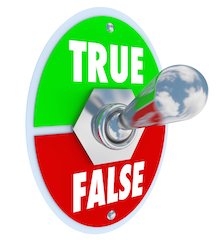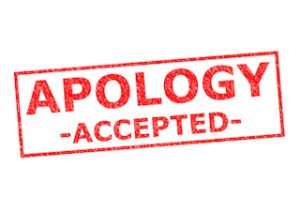As a financial advisor, you probably know a great deal about insurance. Consequently, you understand why life and health insurers must exclude certain losses in order to preserve company solvency. But what about the errors-and-omissions insurance you buy for your firm? Do you know what your policy covers exactly and what it doesn’t? In a prior article, we dealt with the former by reviewing the E&O insuring agreement. This time, we’ll discuss the major exclusions included in most contracts.
Already know your E&O exclusions? Then verify your knowledge by completing this quick 12-question true/false quiz:
- True or False: E&O insurance in certain cases will cover you for claims arising out of litigation that occurred prior to the policy’s inception date or were pending at that date.
- True or False: E&O insurers will generally never approve claims submitted by a parent, spouse, domestic partner, or child of the E&O insured.
- True or False: A business entity in which an E&O insured has an ownership stake will not qualify to receive an errors-and-omissions settlement.
- True or False: Financial penalties imposed by regulatory entities such as SEC, FINRA, and state insurance departments may qualify for E&O reimbursement as long as they don’t exceed $10,000.
- True or False: A financial advisor who unconsciously or accidentally violates a law, financially harming a customer in the process, may qualify for E&O coverage.
- True or False: An investment advisory client claiming to have suffered undue stress, anxiety, and depression resulting from unsuitable securities recommendations can receive E&O insurance payments for resulting psychiatric care.
- True or False: Errors-and-omissions insurance for life and annuity insurance agents is elastic. In other words, if an agent also provides actuarial, legal, or tax services to an insurance client and makes a mistake doing so, full E&O coverage is available.
- True or False: An E&O policy in certain cases will provide benefits to insureds who claim their advisor charged them an excessive fee or insurance premium.
- True or False: If an insurance agent advises a client to buy insurance from a company that appeared to be solvent, but later fails, the client can seek reimbursement from the agent’s E&O insurance policy.
- True or False: Errors-and-omissions insurance is the primary recourse for customers who have disputes with an advisor regarding ERISA health and welfare/pension plans, employment practices, or intellectual property infringement.
- True or False: Financial advisors will not be covered against E&O losses stemming from the use or disclosure of confidential client information or non-public information (in connection with securities).
- True or False: Clients have no E&O claim options as long as their advisor dispute is part of a class-action lawsuit.
• Have you ever had a problem resulting from an unexpected or unknown E&O exclusion? Please share your experience on this new thread.
E&O Exclusion Quiz answer key
1. False. Any claim that directly or indirectly arises out of litigation settled prior to the E&O policy’s inception date or that is pending at that date is not eligible for coverage.
2. True. E&O claims that benefit a family member of the insured aren’t covered.
3. False. The entity might qualify for a settlement as long as the ownership stake is below the insurer’s designated threshold. Check your policy for details.
4. False. E&O policies exclude coverage for regulatory fines of any size.
5. True. An unintentional violation may be covered, but dishonest, fraudulent, criminal, or malicious intentional acts or those that willfully violate any statue or law will not be covered.
6. False. Errors-and-omissions insurance policies exclude coverage for claims involving actual or alleged bodily injury, sickness, disease, emotional distress, mental anguish or death of any person.
7. False. Errors-and-omissions coverage is restricted to a life/annuity agent’s core duties. Ancillary services provided as an actuary, accountant, attorney, property or casualty agent, real estate agent, third-party administrator, or market maker or securities specialist is excluded from E&O coverage.
8. False. In any case where an insured claims inability to pay a premium or fee or refuses to pay for any reason, the insurer can exclude E&O coverage. However, this exclusion does not apply to disputes arising from policy surrender charges.
9. False. An insurance agent or broker is not a guarantor of the financial condition or solvency of an insurance company. However, the agent or broker must exercise due care to make sure he selects an insurer that is financially stable.
10. False. Coverage for such disputes is generally available from other types of insurance, not errors-and-omissions insurance.
11. True. Use, misuse, or disclosure of confidential information or non-public information can lead to an insurer refusing to cover an errors-and-omissions insurance claim.
12. True. Errors-and-omissions insurance policies exclude coverage for class action legal disputes.
If you got more than a couple questions wrong, consider spending a few minutes now to review your E&O policy. Trust us… it will be time well spent!
• Read E&O on the Fly, Part 1: Essential buying knowledge for busy advisors
• Have you ever had a problem resulting from an unexpected or unknown E&O exclusion? Please share your experience on this new thread.
For more information on affordable errors and omissions insurance for low-risk financial advisors, visitE&OforLess.com. For information on ethical sales practices, please visit the National Ethics Association’s Ethics Center













